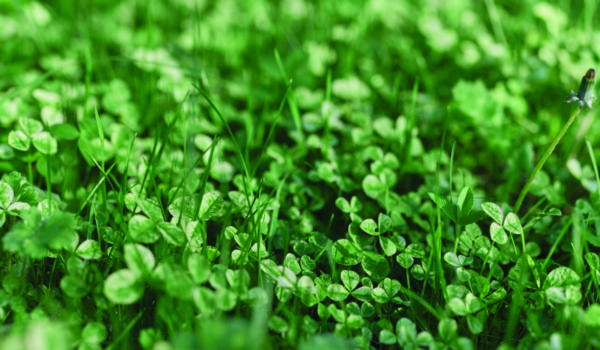
Yard trends to make it easy on you and the environment
By Kelsey DeClue
There’s nothing quite like a lushly landscaped, big, beautiful lawn. Is there any better feeling than walking barefoot through soft grass, or laying out a blanket on the lawn and feeling the sun on your face? Well, in fact, there might not be. Spending time walking on or manipulating the earth, particularly barefoot or with bare hands — called grounding — has tremendous benefits for your overall health and wellbeing.
However, are you managing a golf course? No? Well then, there’s no earthly reason your lawn has to be a perfect swathe of green comprised of one species of grass. What does that mean? Rethink the lawn! Potentially say goodbye to watering once a week, weeding and feeding and spending your precious weekend pushing a lawn mower. Say hello to a space of close-cut, green grass that looks pretty, supports bees and butterflies, and still leaves you room to walk barefoot or watch the kids play.
Instead of thinking about what the lawn is “supposed to” look like, think about why you want it. In your garden, what purpose do you want your lawn to serve? OK, OK, bear with us here … we’re about to blow your mind. A lawn is just a space with close cut greenery, and there’s no rule that the greenery has to be a single species of grass. Allow broad-leafed “weeds” like clover, plantain and violets into your lawn. What did you say? Really? Yes. Because all these plants are green, a pass with the lawnmower that knocks the flower heads off everything tidies the space quickly. Yes, this look takes some getting used to, especially if you’ve been waging war on dandelions for years. But dandelions are an early food for pollinators, a bright splash of yellow in spring and edible for humans. They bloom and seed in one big push in spring, then more or less subside to the occasional appearance the rest of the year. Maybe it’s time to make peace with them.
OK, maybe you can’t quite accept the dandelions yet, but there are many other options. The right groundcover can increase biological diversity in your garden while reducing the need for maintenance. Here are some great options.
Loosen up your existing lawn
“Practice smart, organic lawn care. Raise your lawn mower deck to 3 inches to encourage grass rather than weeds. Leave clippings on the lawn to improve the soil. Water the lawn only when it starts to look stressed,” said McKenzie Spotts, CEO and gardener at Spotts Gardens of Indianapolis. “If you do nothing but this, you can improve the health of your lawn while dramatically reducing your environmental impact.”
Create a mixed-species lawn
An easy and viable substitute for traditional grass in the lawn is miniclover. This dwarf form of white clover only grows about 4 to 6 inches tall. Like all clovers, it actually improves the soil by returning nitrogen to the ground. If it you want to mix it in, include it in your existing lawn at between two and five percent coverage. The clover quickly fills in bare spots, muscling out weeds. Until the rise of the modern, lawn-care industry, lawn mixes always included clover, which stays green and returns nitrogen to the soil.
Or, if you’re feeling particularly progressive, use it alone as a clover lawn. In full sun to part sun, miniclover works as a thick, effective lawn. It takes cutting well, so you can cut it down to whatever height you want. If you don’t want to mow at all, it will flower for about a month in the summer providing loads of food for bees.
“We like to think of the garden as an extension of your home. It should reflect your personality, your interests and be functional in a way you can enjoy and maintain with ease,” Spotts said. “Ultimately, it should connect you with the pleasures of nature that vitalize your life.”
The perks of traditional, turf grass lawns come with some serious costs — like fertilizers, pesticides, water and fuel for mowers. It’s not only just money out of your pocket, but standard grass lawns are extremely tough on the environment. If you have a small yard space or aren’t particularly tied to a pedestrian lawn, consider native plants, drainage rock and ground cover to fill your outdoor yard space. Native grasses, sedges and succulents are great fillers that last year after year, and can fill your outdoor space with uplifting green. Accent full-sun areas with wildflowers and other native pollinators and not only will your yard be low maintenance, but you’ll be helping the planet, too.


